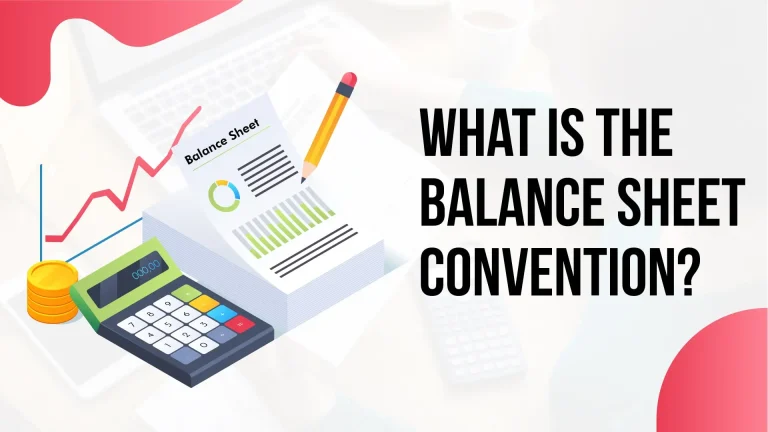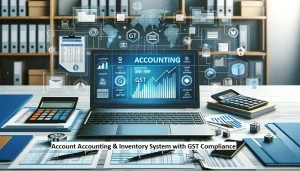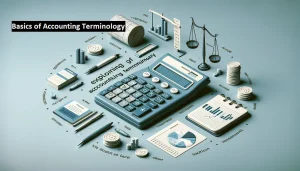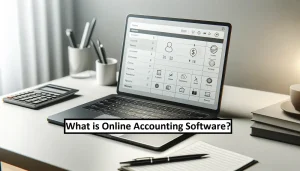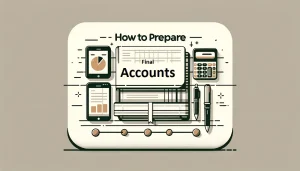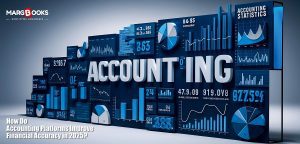Balance sheet convention is a standard practice, used to present the financial statements in a specific format. It helps in maintaining consistency and comparability in financial reporting. Organizing the balance sheet in a standardized way makes it easier for users to understand the financial statements of different companies. The balance sheet is also known as the statement of financial position. It presents in transparency what an entity owns and owes, or its assets and liabilities in a given period of time.
What is a balance sheet convention?
The balance sheet convention is a fundamental principle in accounting that presents a standard way of financial reporting. It includes the following in the presentation of their financial statement.
- Assets: Assets are the resources that are owned by the company, for example, cash, inventory, property, and equipment. They are generally listed on the balance sheet in the decreasing order of liquidity.
- Liabilities: Liabilities are obligations or debts that are owed by the company, like accrued expenses, accounts payable, and loans. Liabilities are listed in order of maturity, which means that short-term liabilities appear before long-term ones.
- Equity: Equity includes contributions by the owners of the company like, share capital and profits reinvested into the business
- Balance: This ensures that the accounting equation is balanced, meaning that the company’s total assets equal its total liabilities and equity. A conventional balance sheet entails the above-given components^ to present the financial statement with clarity. It helps compare the financial reports easily.
Understanding Balance Sheets and its components.
In order to understand the balance sheet in clarity we first need to understand the components that are entailed in the balance sheet.
Assets
An asset is a resource that is held on to by an individual or a company with a supposition that it will provide them with benefits in the future. They are usually bought to benefit a business’s operations by reducing expenses and improving sales. Assets are classified as current, fixed, financial, and intangible.
- Fixed Assets are resources that cannot be liquidated in the upcoming year. They include land, equipment, machinery, buildings, etc.
- Current Assets are expected to be consumed or converted into cash within a year. They include cash and cash equivalents, accounts receivable, inventory, and other prepaid expenses.
- Intangible Assets are economic resources with zero physical presence. For example, trademarks, copyrights, goodwill, intellectual property, and patents.
- Financial Assets are non-physical assets, subjected to valuation by a contractual claim. For example, bank deposits, bonds, and participation in companies’ shares.
Assets are equivalent to the sum of liabilities and equity.
Assets = Liabilities + Equity
Liabilities
Money that a company owes to external parties from bills, that they are supposed to pay to the suppliers as rent utilities, and salaries are called Liabilities. They are financial obligations, that an individual or a firm is supposed to pay off. It can include loans and accounts payable. Liabilities can be classified into two types Current Liabilities and Long-term liabilities.
- Current liabilities:- Current Liabilities are debts that are due within the next 12 months. For instance, If a firm has 10 years left on a loan to pay for its machinery, 1 year is the current liability and 9 years is a long-term liability. Current liabilities may include, accumulated interest owed, wages payable, customer prepayments, and more.
- Non-current liabilities or Long-term liabilities are the obligations that are not mandated to be paid in the next year. They have a longer repayment period. They include items such as long-term loans, lease obligations, bonds payable, and pension obligations.
Liabilities are calculated by deducting Shareholder’s equity from assets.
Liabilities = Assets – Shareholder’s Equity.
Shareholder’s Equity
Shareholder’s equity also called owner equity, is the investments made by the shareholders when the company is first formed. In simple words, it is everything that belongs to the owners or the shareholders of the firm. In any case, if the company needs to be liquidated, shareholder’s equity is the money, that will be attributable to its owners after the clearance of debts.
Shareholder’s Equity is equivalent to assets minus liabilities.
Shareholder’s Equity = Assets – Liabilities.
With the help of this information, investors and shareholders can get an insight into the financial health status of the firm. Comparing balance sheets of different periods can track the company’s financial performance over time.
Analysis of Balance sheet.
| PARTICULARS | AMOUNT | AMOUNT |
| Equity and Liability | ||
| Shareholder’s fund | ||
| Common Stock | 50,000 | |
| Retained Earnings | 60,000 | 1,10,000 |
| Liabilities: | ||
| Current Liabilities | ||
| Accounts Payable | 25,000 | |
| Short Term Loan | 10,000 | |
| Accrued Liabilities | 8,000 | 43,000 |
| Long Term Liabilities | ||
| Long Term Loans | 60,000 | |
| Deferred Tax Liabilities | 12,000 | 72,000 |
| Total | 2,25,000 | |
| Assets: | ||
| Current Assets | ||
| Cash and Cash Equivalents | 50,000 | |
| Accounts receivable | 30,000 | |
| Inventory | 20,000 | |
| Prepaid Expenses | 5,000 | 1,05,000 |
| Fixed Assets | ||
| Property, Plant, and Equipment | 1,50,000 | |
| Accumulated Depreciation | -30,000 | |
| Net Fixed Assets | 1,20,000 | |
| Total | 2,25,000 |
With the above-given balance sheet example, we can analyze the financial statement of the said firm. Taking the sum of different particulars from liability equity we have calculated the assets of the company. Balance sheet analysis can be done by hypothetical shareholders, from this balance sheet example.
Conclusion.
The balance statement is a crucial financial statement that helps in providing transparency and accountability, by presenting a snapshot of a company’s financial position at a specific point in time. It allows stakeholders to analyze a company’s liquidity solvency and overall financial performance. Creating a manual balance sheet can be intimidating and subjected to errors, generate an errorless balance sheet, in a few steps using MargBooks and export it as per your requirement into excel, word, pdf, or html.
Also Read:
- The ABCs of Account Accounting & Inventory System with GST ComplianceIn today’s fast-paced business world, keeping track of money and goods is crucial. That’s where an account accounting and inventory management system with GST compliance comes in. Let’s break down what it is, why it’s essential, and why using a… Read more: The ABCs of Account Accounting & Inventory System with GST Compliance
- Exploring Basics of Accounting TerminologyWelcome to the world of finance made simple! In this easy-to-follow guide, we’re breaking down the basics of accounting terminology. Whether you’re a business owner, a student, or just someone curious about money matters, we’re here to demystify the language… Read more: Exploring Basics of Accounting Terminology
- What is Online Accounting Software?Businesses are always looking for ways to make managing money easier. One tool that helps a lot is online accounting software. In this guide, we’ll talk all about it—what it is, what it does, and how it’s changing businesses, especially… Read more: What is Online Accounting Software?
- How to Prepare Final AccountsSetting out on the path towards final accounts offers an incredible glimpse into a company’s intricate financial story. Let’s examine key components that contribute to this tale while demystifying final account preparation complexities. Understanding Final Accounts: Final accounts are like… Read more: How to Prepare Final Accounts
Frequently Asked Questions
What are the main components of a Balance Sheet?
The main components of a balance sheet are assets, liabilities, and shareholder’s equity. Cash accounts receivable, inventory, and property comprise of assets. Liabilities entail accounts payable, loans, and other debts and shareholder’s equity is the shareholder’s investment in the business.
What is the purpose of a balance sheet?
Balance sheets, prepared at the end of a firm’s accounting period, show a company’s financial statement of a time. And analyze the financial performance of the firm. It provides an overview of a company. to help stakeholders such as investors, creditors, and management assess its overall financial position.
What are non-current liabilities?
Non-current liabilities are the liabilities or obligations that are not mandated to be filed within the next year. They are also called long-term liabilities. Long-term loans and lease obligations are a couple of examples of non-current liabilities.
What is double-entry accounting?
Double-entry accounting means bookkeeping records in at least two accounts to maintain the balance of the accounting equation. In this method, every debit entry corresponds with a credit entry of equal value. This method helps in maintaining the integrity of the financial records.
How Often should a balance sheet be prepared?
Balance Sheets are usually prepared at the end of an accounting period, for example, monthly quarterly or annually. This helps to track a company’s progress through its financial statements over time.

